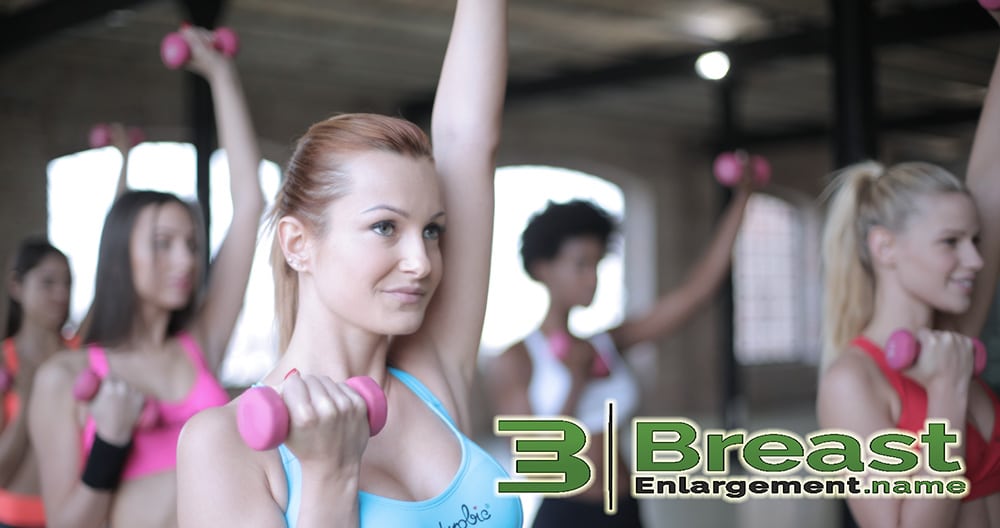
I know a friend who told me a story that I found amusing and concerning. This dual emotional response came about due to the nature of the story. One of the patrons at a gym told her NOT to wear a bra during a workout. Apparently, a small group of women at the gym were promoting this idea that exercising with a bra can lead to smaller breasts.
Here in Breastenlargement.name, we value our audience’s health, even more so than the aesthetic value of breast sizes and shapes. Thus, it is vital that we get down to the facts and fallacies, the pros and cons of doing your workout with a bra.
The Bra Debate: To Bra or Not To Bra
The debacle between bra supporters and bra naysayers has been ongoing for ages. There were highs and lows, particularly in the 1960s. Although, in some cases, the motivation is political, often the issue centers around comfort and supposed health problems.
But are there really health benefits to wearing or not wearing a bra on a daily basis? According to health experts, neither case is clear. This is because no thorough study has been conducted that has made a clear conclusion. The limitation stems from the fact that it would take decades of following a specific group of women. In addition, the control groups must have absolutely no genetic predisposition. That seems workable, but realistically, this is a very difficult situation to set up.
Another factor that contributes to the support of going braless is trends. Fashion and celebrities’ opinions can influence women on their position of wearing or not wearing bras.
In the past, “Cooper’s Droop” was theorized to be the result of extended periods of not wearing bras. According to this theory, the drooping of Cooper’s ligaments, which makes breasts look firmer and not sag, would occur. However, this theory has been proven to be inadequate. Age and childbirth rearing are the more obvious culprits.
But, what about the comfort level? It really depends on a woman’s breast size. For instance, a woman with small breasts might feel fine going on with their day without a bra. However, a well-endowed woman would need the support provided by a bra. Otherwise, there may be short and long-term pain in the lower back.
So, Why Workout With a Bra?
Let us get this out of the way early on. Anyone saying that wearing a bra during your workout sessions will make your breast shrink is WRONG. There is no proven correlation between wearing a sports bra for support during workouts and making breasts look smaller or sag.
On the other hand, if you do workouts without a bra, there can be hazards to your overall comfort and health. And no, this is not limited to those with bigger busts. Even smaller breasted women should most definitely workout with a bra.
Breasts are supple and stretch naturally. But the breasts’ muscles can also be damaged when you put a strain on that area. Tissues can tear. And your lower back will experience shooting pain when you lift weights, trying to handle both the weight in your arms and chest. This is because breasts, on their own, are primarily fat tissues. They move depending on the motion of the body but cannot be controlled by themselves.
Breasts do not adjust on their own. And they certainly will not stay in place when doing strenuous exercise. Do you want your breasts going up and down, to and fro during your aerobics, boxing, cardio, or cross-fit training? I am certain many would say no!
Guiding Principles to Working Out With a Bra
To get a proper workout with a bra, you must know the right bra to wear. You cannot just take any bra off the women’s department’s rack in a sports apparel store. Wearing the wrong type of bra during a workout can be as problematic as not wearing one. Here are a few guidelines for making sure you get the right one!
- Make Sure it Fits Comfortably — The bra you choose should fit well. That goes without saying. Finding the right balance can be a little tricky. The rule of thumb is to make sure both sides of your breast fit completely inside. Avoid getting a bra that lets your breasts spill out to the sides. But it should also not be so tight that you feel any form of discomfort.
- Consider the Exercise — If your workout will be relatively light like yoga, then less support is required. On the other hand, if you will be doing lots of aerobics or cardio, more support is needed. Other than the support function, make sure that the material is appropriate!
- Material — If at all possible, get a sports bra that allows your skin to breathe and does not chafe. Many modern activewear bras allow for better moisture absorption and permeability.
- Compression bra — Choose a compression bra if you have small or moderate-sized breasts. This type is so named because it compresses the breast area into a single frame.
- Encapsulation bra — This other type of activewear bra is better for larger sized breasts. Instead of compressing the breasts as a unit, this bra does so individually. This provides a better way of keeping each breast in place without sacrificing your comfort level.
- Straps — The straps are usually an afterthought when buying a sports bra. But to get the most out of your workout, choose a bra that provides straps for both your shoulders and back. Having pads on the shoulder straps can particularly help avoid unnecessary strain.
Workout With a Bra in Style
After considering all the practical considerations for your sports bra, don’t forget to make sure it looks good on you! Choose your favorite colour combination that works best with your skin tone. Darker colors are always a good choice, but having light (or even neon) colors for the accents and edges is great, too.
As we always say: Feel good and look even better! And for more information, news, and tips for breast health and enhancement, keep your eye on Breastenlarement.name!
Common Questions
Yes, wearing a bra during workouts is essential for proper support and comfort. It helps prevent strain and potential damage to breast tissue while minimizing back pain, especially for women with larger busts.
Working out in a regular bra may lead to discomfort, inadequate support, and possible damage to breast tissue. Regular bras may not provide the compression and encapsulation needed for strenuous activities.
Wearing the right bra during exercise helps maintain the shape of the breasts by providing support and minimizing excessive movement, which can lead to sagging over time.
Professional athletes wear bras to support and protect their breasts during intense physical activities. A sports bra minimizes discomfort and strain, enabling them to focus on performance without distractions.

